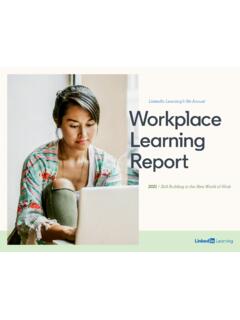Transcription of Driving through the consumer’s mind: Steps in the buying ...
1 1 Driving through the consumer s mind: Steps in the buying process December 2014 For private circulation only terms 3 Introduction 4 About the study 5 Purchase triggers 6 Information search 9 Interactions at dealership
2 15 Customer endorsement 19 Appendix 22 Contacts 24 3 Key termsGen XBorn between 1965 1976 in the age of 37 to 48 yearsGen Y Born between 1977 1994 in the age of 19 to 36 yearsOEMO riginal equipment manufacturers4 IntroductionThe passenger car market, after a period of slow and no growth, seems to be showing signs of turning around. Based on the encouraging growth numbers, automotive manufacturers are counting on the general mood of optimism to see the sales change gears and accelerate.
3 A few months ago we published a report Driving through the consumer s mind: Considerations for Car purchase where we covered the purchase triggers and considerations. This report is based on the responses of over 1500 car-owners from India (out of the 1800) who participated in our Global Automotive Survey. This was a part of a global initiative where we surveyed over 23,000 people in 19 countries. In this report we cover the buying process - the information buyers look for, the time they spend researching, their choice of information sources, interactions with dealers and their openness to recommend products to the sample includes rural customers, it has a significant presence of urban customers, given the pattern of car ownership in India.
4 Further, the sample may not represent the various brands proportionate to market share those brands may enjoy. Though we have attempted to cover a large cross-section of consumers, this random sample may have limitations of representing all the strata of car owners or car buyers. Please refer to the Appendix-1 for details of the respondent analysing data or drawing inferences, we have taken only statistically significant data into consideration. As true to most surveys, the analysis presented in this report may be taken as directional in nature and may not accurately reflect the realities relating to a brand, customer category, etc. The reader is advised not to take the conclusions or the inferences drawn as professional counsel or assume these to be premises on which they would make hope that this report will help provide additional perspectives to OEMs in devising their marketing strategies to drive future growth.
5 5 About the studyThe analysis presented in the report essentially comes from primary research and attempts to answer the following:1. What is the information the buyers may be looking to gather to make their decision about the car they would buy?2. What is the time and effort spent in the process? What are the information sources used by consumers? What is the relative importance of the information sources?3. How important is the dealer visit?4. How much do the customers recommend their or other products to their circle of friends and relatives?We have attempted to answer the above questions as per the consumer purchasing process illustrated below:Information searchInteractions at dealershipCustomer endorsementsUnderstand the key aspects of the buying process at the automotive dealerships Sources of informationProduct & purchasing experienceNature of researchPrice / Features / TechnologyPurchasing processResearch validationsPurchase Triggers Identify relative importance ofthe different information sourcesused by the consumersUnderstand the post - purchaserecommendations by the customers6 Purchase triggers 7 Purchase triggersWe have summarized the findings of the previous report on Driving through the consumer s mind: Considerations for car purchase.
6 In this section we remind the readers of the reasons that trigger the car purchase the developed markets where a car is bought to cater to an individual s requirement, the Indian first-time car buyer primarily looks at buying a car for his family. Contrary to the popular belief that the car buyer is motivated by the opportunity to make a statement of success, it is interesting that this is a very rational and practical requirement. Given that the first time buyer has really no comparable reference, it is natural that this buying decision is not influenced by the improvement of fuel efficiency from both Gen X and Gen Y categories have expressed similar requirements for their first car, irrespective of their gender.
7 Family need is rated as the top trigger in purchase decision of a car, and is 8x more important as a trigger than better brand scale with respect to brand image(1X=% respondents for whom Brand imageacted as purchase trigger)First - time buyersTop reasons for vehicle purchaseMy familymembers ordependentscan use itNeed for morespace / largervehicleNew technologyavailableCan afford tobuy / leaseanother vehicleImprove fuelefficiencyImprove reliabilityPurchase vehiclewith a betterbrand / image8xx01234567898 Unlike the first-time buyer, a repeat buyer understandably aspires to upgrade, going by the reasons cited by the respondents. In their case, a more sophisticated product is the primary requirement. While most purchase drivers were common across the repeat buyers, the responses given by Gen X and Gen Y presented an interesting mix.
8 While technology stood out as a ruling factor for Gen Y, Gen X gave precedence to larger space requirement. This trend held true irrespective of the respondent s gender. Interestingly, Gen X male alone have rated can afford to buy as a reason ahead of the utility for family members, thereby, suggesting their desire to use the car as a statement of success. On the basis that the buyer has very rational reasons to acquire a car, we will explore the process they go through in doing the buyersTechnology and need for more space are rated as the top triggers in purchase decision of a car, and are 3x more important as a trigger than better brand technology availableNeed morespace / largervehicle My familymembers ordependentscan use itCan afford tobuy / leaseanothervehicleImprove fuel efficiency Improve reliabilityPurchasevehicle witha betterbrand / imageTop reasons for vehicle re-purchase3x3xx01234 Relative scale with respect to brand image(1X = % respondents for whom Brand image acted as purchhase trigger)
9 9 Information search10 The fact that price/ value and features are primary filters reiterate the conclusion that the buyer makes objective choices right from the beginning of deciding to buy to making the actual aspects do the consumers consider for research?This survey also seemed to suggest that the car buyer has the impression that he/she can identify a mobility solution that can uniquely satisfy his/her requirement. That said, as is widely believed, the price point is amongst the early, if not the first, issue of made the decision to make a purchase, we cover the nature of information the buyer seeks to collect for deciding on the final : Type of vehicle refers to Hatchback/ Sedan/ SUV etc., while model refers tobrands of vehicle offered by various OEMs.
10 68%70%72%74%76%78%80%82%84%86%Price/ valueof vehicleVehiclefeaturesType ofengine Type ofvehicle Model of vehicleBrand ofvehicle Styling and/or color ofvehicleImpact of factors on the decision of which vehicle to purchase% of respondents indicating high importance i 11 While social media strategy is high up in the priority list for manufacturers, the customers seem to attach the least importance to what they get out of the social networking , word-of-mouth reference is the most important source of information. While there is a lot of emphasis placed on the sales persons by the dealers and OEMs, the influence they have on the decision making is minimal. This reiterates the importance of keeping the buying and ownership experience pleasant for the customer, so as to build credibility when the same customer is in the market to buy a replacement are the information sources?












